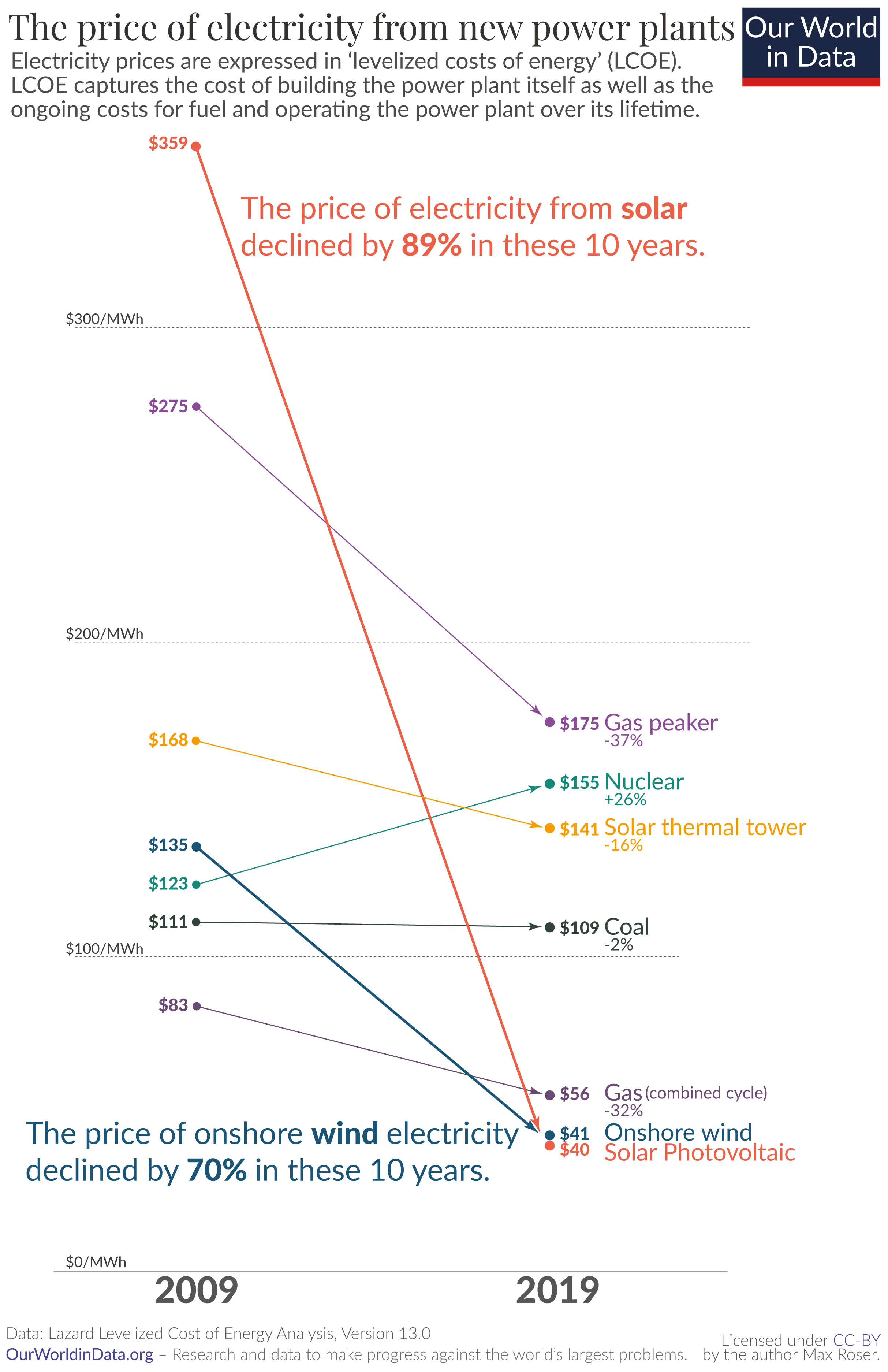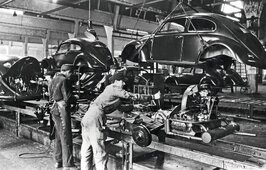I bought 280Ah rack for $1230. I suspect it will be cheaper if I order more as prices keep falling.I don't think there is much money in it. Typical rack-pack 100AH/48v is 16cells, 105's so, .... next. The other guts are wiring harnesses, front panel displays and a BMC, along with the chassis. Have you priced a 4-5U rack server cabinet for a computer with no power supply or anything in it? $250+? + $100 for the BMC and $50 for the wiring BS, call it $400 for a box at best. So now I spend my $700 on the batteries and $400 on the box, I've got $1100 tied up in a DIY setup, or I could spend the $1350 and just get something already made, perhaps with some kind of support or warranty. It seems rackmount heavy duty steel boxes are not all that cheap.
You are using an out of date browser. It may not display this or other websites correctly.
You should upgrade or use an alternative browser.
You should upgrade or use an alternative browser.
LFP for EV's projected to be less than $56 per kWh within 6 months
- Thread starter Will Prowse
- Start date
ksmithaz1
Solar / EV Junkie
Effing Engineers. . .I would have thought a thick molded plastic case (ice chest type thing) would be a good idea with a single PCB busbar with integrated balance tracks and temperature sensors that just gets bolted to the battery terminals.
Then the BMS, breaker and connections get mounted into a front panel that then slots into the front of the plastic molding and then you screw down a lid that holds the whole lot together.
ksmithaz1
Solar / EV Junkie
Citation Please. 1:1 not with a bunch of credits and debits and BS. A 100KW NG generator can be up and running in hours. Something in the 40MW range could be done in weeks. 40MW is a frak-ton of solar panels. You still have to deal with transmission, and if the sun ain't shining or the wind ain't blowin you don't get squat.Renewables are already cheaper than gas and coal for making electricity ... and faster to build too. Can't they also sell off their carbon credits to others?
I mean if you have the receipts spill-em.
Carbon fuels have their place. That place is second or third string backup, when nothing else is available. And by the year, less is needed. It's only advantage now is 100 years of maturity, like horses had for 2,000 years. Now horses are mainly entertainment, as should be ICE vehicles. There are still ships running on steam but their time is past. Progress moves on.
ksmithaz1
Solar / EV Junkie
You live in Nicaragua. Warm. Anywhere in the north, ICE vehicles are going to be around for a while. They have a lot of work to do in the design and infrastructure before EVs can be widely adapted.Carbon fuels have their place. That place is second or third string backup, when nothing else is available. And by the year, less is needed. It's only advantage now is 100 years of maturity, like horses had for 2,000 years. Now horses are mainly entertainment, as should be ICE vehicles. There are still ships running on steam but their time is past. Progress moves on.
OffGridForGood
Catch, make or grow everything you can.
I am remindedCarbon fuels have their place. That place is second or third string backup, when nothing else is available. And by the year, less is needed. It's only advantage now is 100 years of maturity, like horses had for 2,000 years. Now horses are mainly entertainment, as should be ICE vehicles. There are still ships running on steam but their time is past. Progress moves on.
Wood was humanities' energy of choice for a very long time. (in many places still is).
Wood transistioned to Coal
then Coal to Oil,
Oil to Natural Gas.
it takes decades or longer for the change from one mainstay to the next. As Skid noted, there are still some steamships out there, but not many.
The current transistion (if we like it or not) will also take decades. Change comes slowly.
ksmithaz1
Solar / EV Junkie
Um, not the way I see it.Not really. The gas motor is being removed and the electric motor doesn't cost as much.
No transmission and those are EXPENSIVE.
There is a bunch of "room" in the budget to soak up the battery.
First of all the difference between motor cost of an EV vs an ICE is fairly nominal, assuming you have only *one* so ~$2500 vs ~$3000 maybe. Unlike a hybrid which has a very small ~50-75HP motor, an EV is going to bump it up to ~200HP which makes life more interesting for cost. Check EBAY for used say 2.5L engines with low miles vs wrecked single motor EV's, or better yet dual motor EV's and double it.
Oops, if you have only one motor you need at least a reduction gearbox, simpler but a transmission is just not that costly in the grand scheme. Hundreds of dollars maybe a little over a thousand in production costs.
Compare retail to retail or wholesale to wholesale, but do not compare retail ICE to wholesale electric.
Now that the "room" is gone batteries are outrageous. The powerplant of an EV makes up 51% of the cost, vs 18% of the cost of an ICE.

How Much Does The Powertrain Represent Out Of Total Cost For An EV?
In a talk at Autoline After Hours, Sandy Munro broke down the costs of electric vehicles and the results explain some EV adoption issues.
ksmithaz1
Solar / EV Junkie
Maybe sometime in the near future but not right now, and I think the $150 figure above is a probably a little low if you factor in some of the hidden cost. Batteries are the biggest materials cost in an EV, and they keep having to re-engineer the platforms, maybe with the 800-1000v systems it will get more stable. Prices will fall, but not like semi-conductors did, too commodity intensive. Fun to watch though.Maybe not. But I know darn well that no auto manufacturer pays close to what I have to pay for the material and I can build it for 2/3 that price (not prepped for an ev, but ready to rock for ESS)
Scale that to a million vehicles with billions of negotiating dollars and it’s far cheaper imo
ksmithaz1
Solar / EV Junkie
Thats how they managed to cram the batteries in a smallish car. Twas a trade-off to be certain.Have you seen how the Tesla structural batteries are constructed? You loose a cell/bank you replace the entire thing at 15-20k, at least ford has semi modular packs to replace.
ksmithaz1
Solar / EV Junkie
Yea, cheaper batteries, cost of the box fairly stable, but you can't lift itI bought 280Ah rack for $1230. I suspect it will be cheaper if I order more as prices keep falling.
ksmithaz1
Solar / EV Junkie
I am reminded
Wood was humanities' energy of choice for a very long time. (in many places still is).
Wood transistioned to Coal
then Coal to Oil,
Oil to Natural Gas.
it takes decades or longer for the change from one mainstay to the next. As Skid noted, there are still some steamships out there, but not many.
The current transistion (if we like it or not) will also take decades. Change comes slowly.
Only if we are sane. Tesla made the EV mainstream, and it will work well in a number of scenarios. Somehow I just don't see a viable electric snow-plow before I'm dead unless there is a dramatic battery breakthru.
Wood and wood pellets are actually a "renewable" resource, and effectively carbon neutral as stupid as the carbon crap is. Coal has actually been around for quite a long time as a bulk fuel source, pumped oil is fairly modern, and I'm not sure of the transition aspect. Natural gas is mostly a oil production by-product, they used to just flare it off, but as the ability to store and move it improved it got adopted more and more. I think the big three were more of a parallel energy sources rather than transition. The world uses more of all three than ever before, though Natural Gas is the least messy, hence the preference in more modern infrastructures.
I'm not sure about wind, but Solar to electric is even less messy that NG, so I do think it will become a significant portion of the worlds energy mix over time. That time does not need to be tomorrow or bust, and good cheap batteries are the key to better viability.
Has wheels. ?Yea, cheaper batteries, cost of the box fairly stable, but you can't lift it
ksmithaz1
Solar / EV Junkie
NEEDS wheels. Stacking should be fun.Has wheels. ?
Q-Dog
¯\_(ツ)_/¯
Citation Please. 1:1 not with a bunch of credits and debits and BS. A 100KW NG generator can be up and running in hours. Something in the 40MW range could be done in weeks. 40MW is a frak-ton of solar panels. You still have to deal with transmission, and if the sun ain't shining or the wind ain't blowin you don't get squat.
I mean if you have the receipts spill-em.

And you think they won’t apply this same packaging towards future designs even implemented in the CT?Thats how they managed to cram the batteries in a smallish car. Twas a trade-off to be certain.
IMO the cyber truck isn’t that “big” of a truck when you remove the shiny wrapper, they are confined by many owners not wanting a 23’ truck, the rear seat room looks abysmal, no spare tire. The outside design really limited what they can do inside and underneath.
I don’t think anyone’s done a break down of the CT pack but my guess is it’s one non serviceable part.
Tesla has invested a ton in 4680 as the future and to get a tight enough package for best bang for buck to make, I’m guessing it’ll be one brick.
New generation, doesn’t reflect current aging fleet. Also that doesn’t factor in many carrot$$$ grid operators wave at firm dispatchable generation in the forward capacity market.
This makes it that much more of a concern for each retirement of stable generation as nothing is replacing it one for one.
Q-Dog
¯\_(ツ)_/¯
And we were able to do that at home. Rebuilding bugs put me through college in the early 70s. They really are that simple. It can be done again with modern plug and play modules. In India there is a growing market for basic, simple EVs.Imagine the possibilities.View attachment 191048
Last edited:
green mountain boys
Solar Enthusiast
It can be done again but it won't. What auto manufacturer wants to make a car that is easy to repair and will last a long time?And we were able to do that at home. Rebuilding bugs put me through college in the early 70s. They really are that simple. It can be done again with modern plug and play modules. In India there is a growing market for basic, simple EVs.




